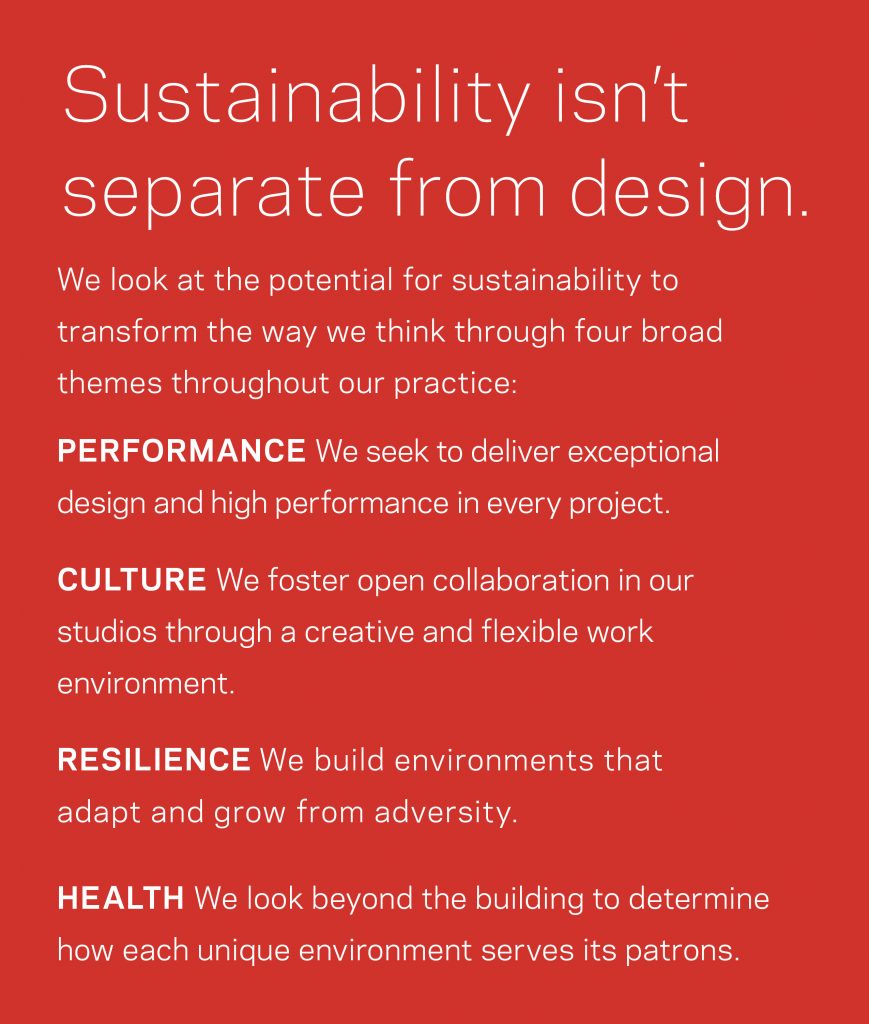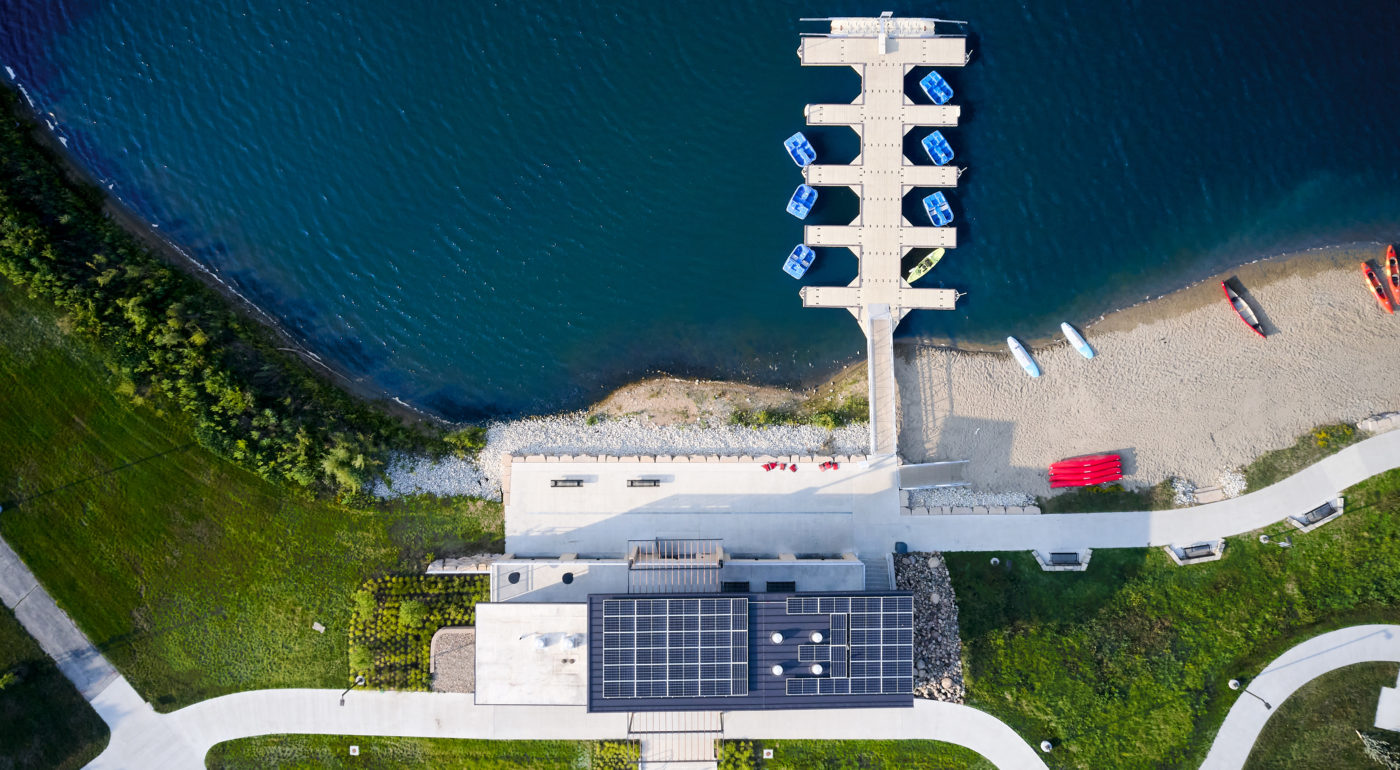Sustainability
 Our architects and engineers are constantly researching emerging strategies, best practices, and new tools as part of our comprehensive approach to sustainable design.
Our architects and engineers are constantly researching emerging strategies, best practices, and new tools as part of our comprehensive approach to sustainable design.
At the beginning of a project we consider broad-based site and planning analyses before identifying energy-saving systems, time-saving construction methods and healthy materials in order to respect natural resources and minimize a building’s environmental impact.
At OPN, sustainability efforts are led by Tate Walker, LEED Fellow, and backed by 37 LEED Accredited Professionals. More than 35 Certified or Registered projects make us a state-wide leader in sustainable design. OPN has also taken the American Institute of Architects’ 2030 Commitment pledge to achieve carbon-neutral buildings by 2030. The voluntary program asks organizations develop multi-year action plans, and implement steps that can advance carbon neutrality in both design and practice. While these efforts are noteworthy, our focus on sustainability is always to create user-friendly facilities that perform exceptionally, regardless of certification.
Designers make many decisions that directly affect a building’s impact on the environment. One of the first – and potentially the most important – questions should be: Is there an existing building we can use instead?
This is adaptive re-use. It is just one way we can reduce embodied carbon to positively impact global warming. But what is embodied carbon?
